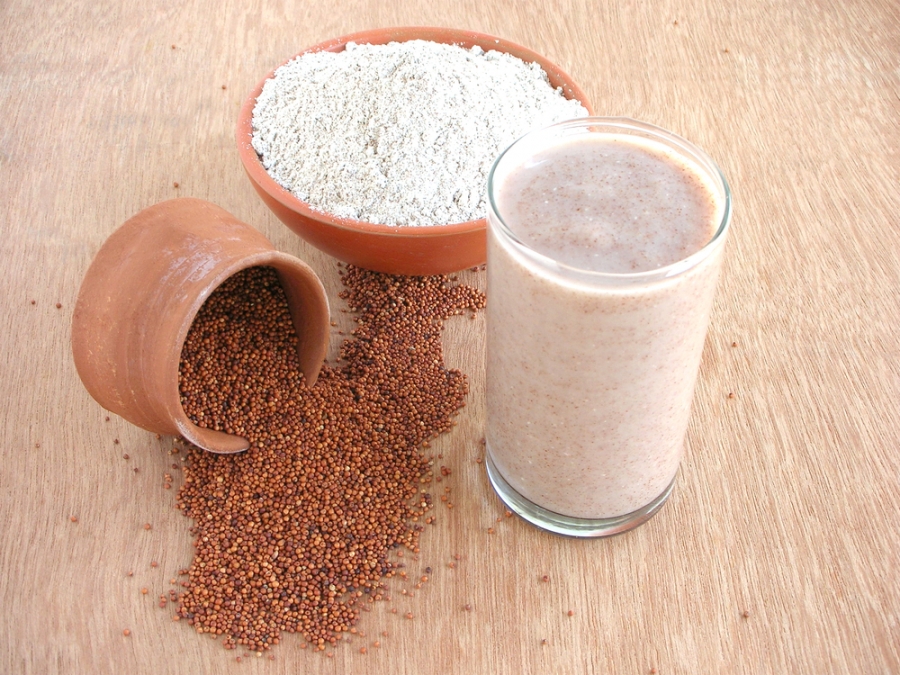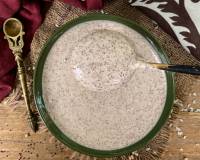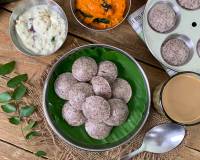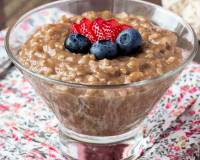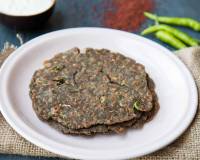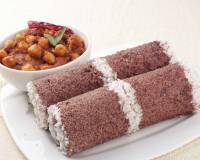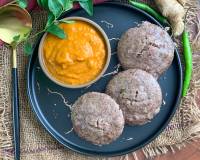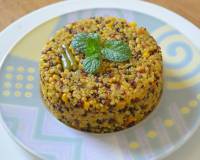Ragi is one of the most common millets grown and extensively used in South India. The state of Karnataka is the largest producer of ragi in India. The origin of the millet is believed to be in Africa, where it is widely consumed. Ragi belongs to the family of small size millets. Ragi is a crop which can withstand severe drought conditions and can be easily grown throughout the year. It is a remarkable source of protein, making it a great source of nutrients for the vegetarian diets. The whole grain of ragi may be ground into flour or decorticated before grinding to produce either a fine particle product or flour, which is then used in various traditional foods.
Natives names: Hindi (Ragi), Tamil (Kelvaragu), English (Finger Millet), Marathi (Nachni)
How to select: Ragi Flour is commonly available in most of the grocery stores. The ragi flour should be clean, grey in color with light shades of brown. The whole millet grains are also available in few of the organic grocery stores. The millet should not be bruised, broken or damaged by the insects.
How to store: Store Ragi flour and millet in an airtight container in the cool and dry place. If required it can be store in the refrigerator in an airtight container to increase the shelf life of the flour.
Culinary Uses: Ragi Flour is made into flatbreads and can be mixed with whole wheat flour to make multi-grain flour. The Ragi Flour is also mixed with lukewarm water, yogurt or milk to create an energising drink. In Andhra Pradesh, ragi balls are eaten in the morning for breakfast with a chilli, onions, sambar (lentil based stew) or meat curry. In Karnataka, ragi flour is generally consumed in the form of ragi balls (ragi mudde in Kannada). Ghee with Huli, Saaru, sambar or another chicken curry is generally served along with these balls. Ragi Porridge is also a good healthy way to consume the millet flour on a daily basis.
Health Benefits: Regular consumption of finger millet is known to reduce the risk of diabetes and gastrointestinal tract disorders and these properties are attributed to its high polyphenol and dietary fiber content. According to research Finger Millet based diets help diabetics as they contain higher amounts of fiber over other cereals and millets. Ragi is rich in methonine, which is an amino acid lacking in most of the other cereals. Since ragi does not contain gluten, it is a wonderful grain alternative for people who are gluten-sensitive. An excellent source of calcium and fibre, it also helps lower cholesterol levels in the blood; this leads to less plaque formation, prevents the blocking of blood vessels, and hence reduces the risk of hypertension and stroke.

